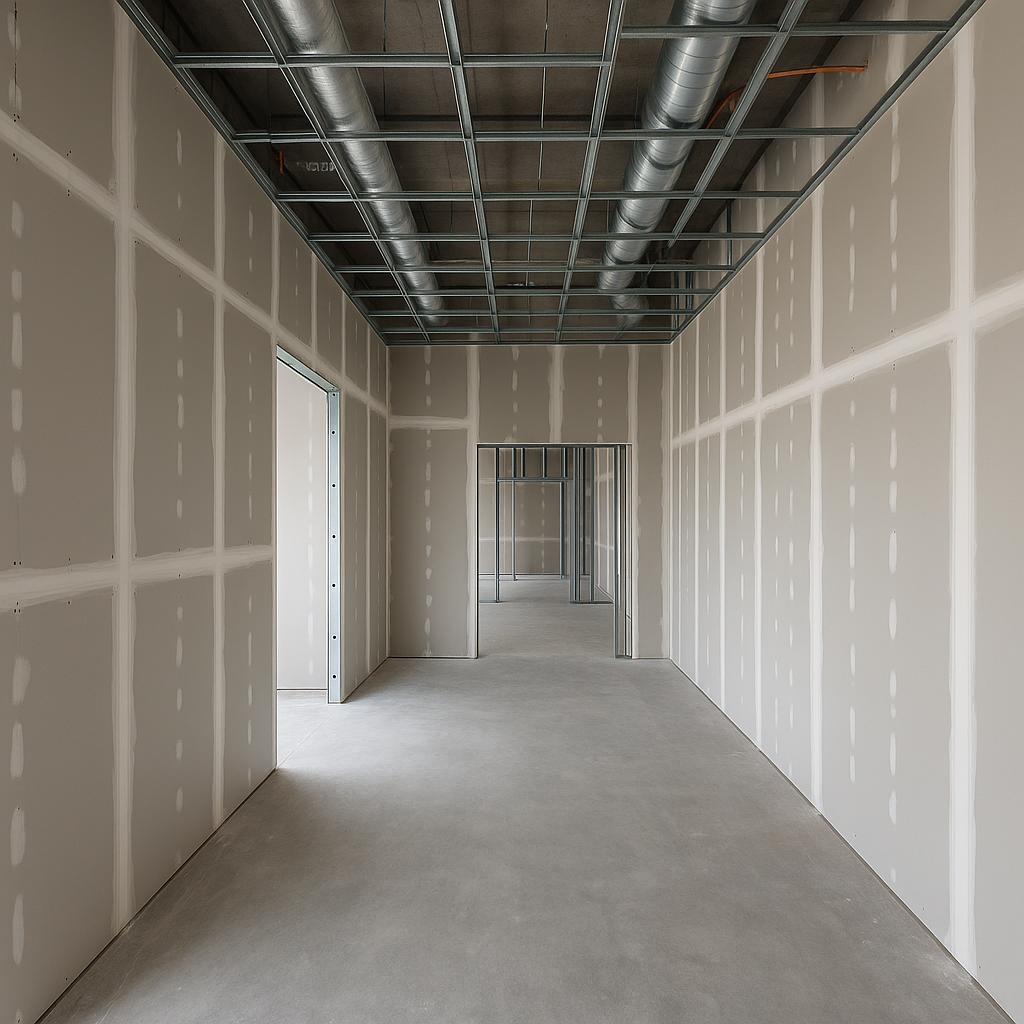
Value engineering (VE) is a vital part of today’s construction process, enabling teams to reconcile design aspirations with budget realities. But while VE offers clear financial advantages, it can significantly impact drywall systems—altering materials, assemblies, and even sequencing. For Architects, Engineers, and General Contractors, understanding how to manage these shifts proactively is essential to maintain both cost integrity and project quality. Estimators, especially, must be prepared to re-price, re-validate, and re-align drywall scopes as VE decisions unfold.
VE is often positioned as a win-win: reduce cost while preserving performance. But in drywall systems, “cost-saving” changes may introduce hidden expenses:
These adjustments are often reactive, made under budget pressure late in the design or early construction phase. Without proper cost tracking and performance validation, drywall trades may bear the brunt of the compromise.
Effective drywall estimating must measure not just initial cost, but downstream impacts of VE changes. This includes:
To avoid margin erosion, these changes must be documented, priced, and validated—especially when driven by design consultants or owner directives.
Rather than approaching VE as a one-time negotiation, estimators can use structured data to create alternate drywall assemblies and evaluate cost tradeoffs in real time. Systems like Active Estimating allow teams to tag assemblies by performance level and produce “if-then” pricing models for each VE option. This empowers GCs and architects to evaluate real cost implications before finalizing changes.
With the use of drywall estimating software, teams can adjust and compare VE scenarios with full transparency. The ability to assign both subjective and objective cost drivers, sync changes with evolving models, and track performance tradeoffs makes it easier to align budget-driven decisions with constructability and compliance.
Value engineering should be a collaborative process—not a fire drill. By treating VE as a structured cost management opportunity and using tools that support real-time alternates, contractors can protect quality and margins. With a system like Active Estimating, drywall scopes stay aligned with design intent, budget, and execution timelines—enabling smarter decisions without sacrificing value.
Contact Information:
Active Estimating
508 2nd Street, Suite 208
Davis
California
95616
Rich Schoener
richard@activeestimating.com
(877)
Schedule a personalized demo to see how Active Estimating can work for your specific needs.
